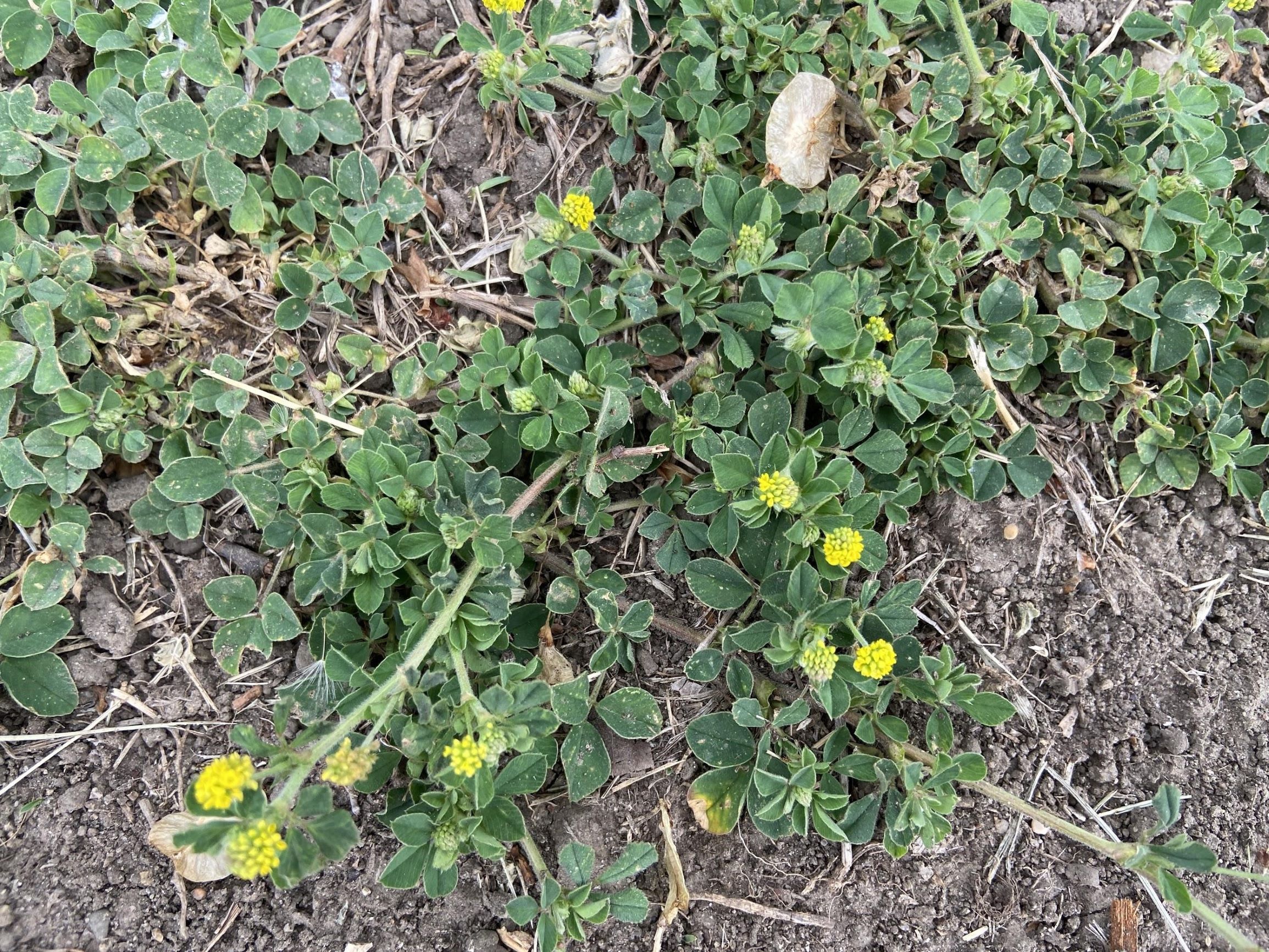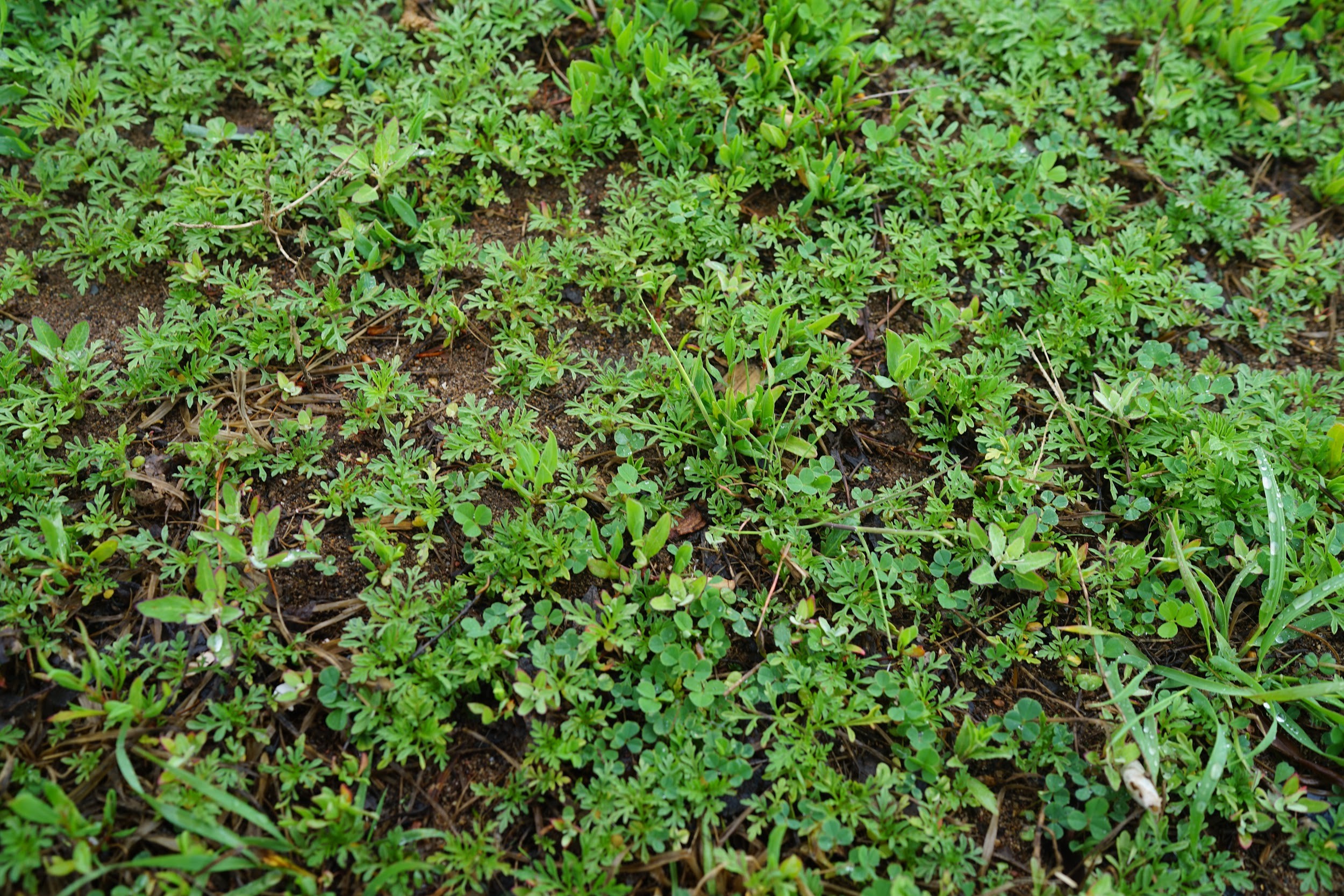By Dominic Christensen
When most people think about weeds they probably think about plants in an abandoned field or on a roadside, but what is a weed? A weed can be defined as a plant that does not belong in a particular place. Different people have different perceptions and ideas of what should and should not be in a place so some weeds we included in this list are certainly not considered a weed by some. So, then why do roadsides have a lot of weeds? In general, roadsides contain a lot of weeds because there is a lot of disturbance. This disturbance creates pockets of available resources and light for weeds. Weeds are weedy because they produce large quantities of seeds and have excellent dispersal characteristics vegetatively and/or by seed. The movement of vehicles, people, and mowers also introduce and move weeds into new areas. Another reason why we may see a lot of weeds on roadsides is because the soil physical and chemical characteristics are often modified creating living conditions that only certain plants can tolerate.
The following list is compiled from two seed bank analysis that I conducted from roadside soil across Minnesota and from my personal observations of roadside vegetation. I am combining the two in this list because it is known that the seed bank may not necessarily reflect the abundance or diversity of what is actually present (Thompson and Grime, 1979). Each plant contains a very brief description, a key identifier for the amateur, and a picture or two. We included only weeds that are commonly present along roadside boulevard strips that are often next to a sidewalk and so are usually upland sites containing a well-drained soil and mowed regularly. Many of these weeds are also indicator weeds, meaning they indicate a particular cultural problem is occurring allowing these weeds to continue prospering (i.e. too low of mowing height, excessive compaction, infrequent mowing, etc).
Common grassy weeds
1. Smooth crabgrass (Digitaria ischaemum)
Summer annual grass that grows to a height of 2 feet with several seed stems branching out at the end of the stem. Roots can emerge from the nodes. Smooth crabgrass (hence the name) has a smooth stem with some small hairs in the collar region.
2. Large crabgrass (Digitaria sanguinalis)
Similar to smooth crabgrass above, except the stem and collar region are very hairy. I’ve found large crabgrass to be more abundant in southern and western Minnesota. A cultural control to manage crabgrass abundance is to practice proper mowing heights of no less than 2-2.5 inches (Davis, 1958; Dernoeden et al. 1998).
3. Foxtail (Setaria spp.)
Green foxtail (Setaria italica) grows 2 feet tall with a spikelet seedhead that contains bristles that are lightly tan colored or clear. Yellow foxtail (Setaria glauca) has similar characteristics but grows taller up to a height of 3 feet and its bristles are a tawny yellow color and it has more hairs in the collar region than green foxtail. I’ve found that yellow foxtail is more abundant in southeastern Minnesota.
4. Barnyard grass (Echinochloa crusgalli)
Summer annual grass that grows up to 3 feet tall with a seed head up to 10 inches long. It can be found in wetter portions of fields and low-maintenance areas. It is often identified as one of the only grasses in the Midwest that has no ligule and no auricle in the collar region.
5. Smooth bromegrass (Bromus inermis)
Perennial invasive cool-season grass with rhizomatous characteristics found commonly in pasture settings in the midwest and along infrequently mowed roadsides. Smooth brome is also known as a long-lived species that is tolerant of many environmental stresses. MnDOT includes smooth bromegrass in their nonnative agricultural roadside seed mixture. It grows up to a height up of 4 feet tall and usually has a smooth stem with awnless earlets.
6. Quackgrass (Elymus repens)
Invasive cool-season perennial grass with extensive rhizomes and is known to grow in many moisture settings and conditions. Quackgrass is distinguished from many other grasses with its spikelet seed head and clasping auricles in the collar region.
Common broadleaf weeds
1. Broadleaf plantain (Plantago major)
A nonnative perennial herb containing sessile flowers and prominent venation on leaves. It is commonly confused with American plantain (Plantago rugelii) which has petioles that are red-tinged at the base instead of green.
2. Black medic (Medicago lupulina)
Annual legume with stems that protrude horizontally with nodes that root. It has yellow flowers and after flowering black seed pods remain. Leaves are pubescent on the underside. We found this weed in roadside seed banks from Worthington to International Falls, MN.
3. Common purslane (Portulaca oleracea)
Summer annual with prostrate growing stems and leaves that look and feel succulent like. The plant is known to switch between CAM and C4 photosynthesis. Leaves are edible and the plant is also commonly found in gardens.
4. Spurge (Euphorbia spp.)
Spotted spurge (Euphorbia maculata), dune spurge (Euphorbia geyeri), and thyme-leaved spurge (Euphorbia serpyllifolia) among others are present along roadsides. These plants are annual summer herbs that grow prostrate with linear to oblong leaves. When a leaf is removed a white milky substance is secreted from the stem; warning it is toxic!
5. Common ragweed (Ambrosia artemisiifolia)
A summer annual native weed that can grow up to 3 feet tall. Leaves are opposite on the bottom of the plant and then alternate above. There is some evidence that common ragweed grows especially well on roadsides and waste places because it can tolerate heavy metal enrichment of zinc, lead, and copper (Bae et al. 2015).
6. Common lambsquarter (Chenopodium album)
Summer annual sometimes with a purple border around leaves and inflorescence appearing red later in the season. Can be managed with more frequent mowing.
7. Dandelion (Taraxacum officinale)
A common perennial among lawns, gardens, and roadsides. Yellow flower head that turns white after flowering dispersing seeds. Leaves are oblong lance-shaped and often free of hairs. Known to “bee” a good source of early spring food for pollinators.
8. Knotweed (Polygonum spp.)
Leathery knotweed (Polygonum achoreum), yard or prostrate knotweed (Polygonum aviculare), and erect knotweed (Polygonum erectum) are annual herbs. Grow erect to prostrate with linear leaves. Knotweed is known to be an indicator weed for excessive compaction, so it is commonly found adjacent to a sidewalk and also on athletic fields that are extensively used.
Honorable mentions commonly found in roadside turfgrass areas not making the list were pineapple weed (Matricaria discoidea), carpetweed (Mollugo verticillata), and white clover (Trifolium repens). We did not consider white clover to be a weed along roadsides, and it is sometimes included in roadside seed mixtures.
This research is supported by a grant, "Regional Optimization of Roadside Turfgrass Seed Mixtures Phase 2: Regional Field Trials and Economic Analysis", from the Minnesota Department of Transportation and the Minnesota Local Road Research Board.
References
Bae, J., Byun, C., Watson, A. K., & Benoit, D. L. (2015). Ground cover species selection to manage common ragweed (Ambrosia artemisiifolia L.) in roadside edge of highway. Plant ecology, 216(2), 263-271.
Chadde S. W. (2019). Minnesota Flora. An Illustrated Guide to the Vascular Plants of Minnesota.
Davis, R. R. (1958). The Effect of Other Species and Mowing Height on Persistence of Lawn Grasses 1. Agronomy Journal, 50(11), 671-673.
















